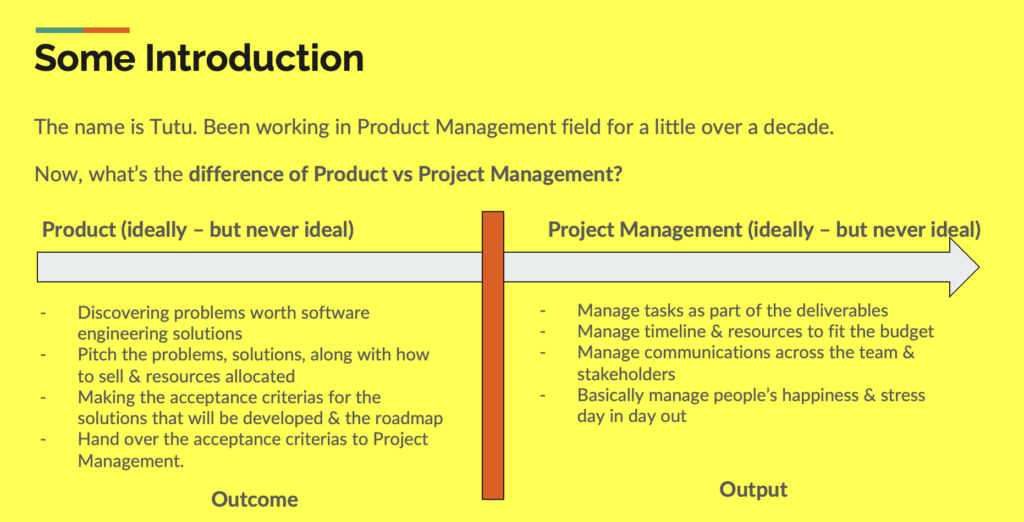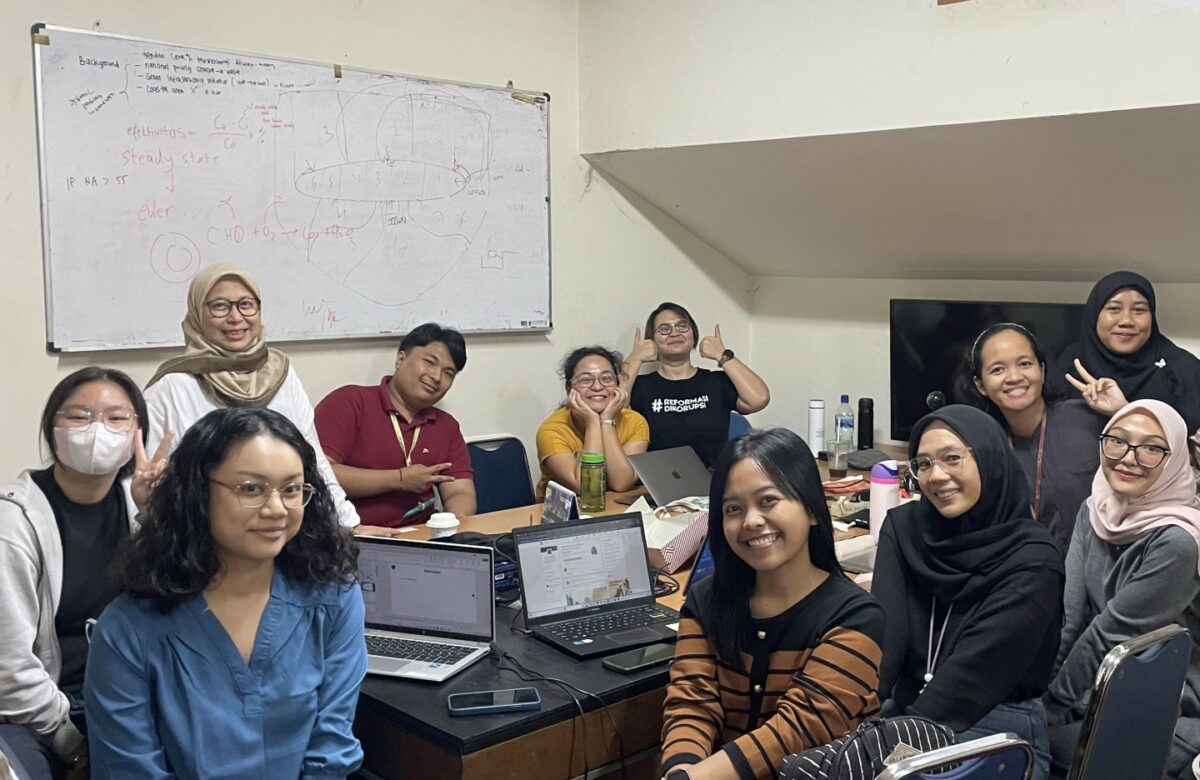Ideal, but never ideal. Words repeated by Pramirtha Sudirman, known to her friends as Tutu, when sharing her experience as Product Manager, which job description often overlaps with Project Manager. After working for 14 years in fast pace start-ups, she shares her insights on what people don’t talk about when they talk about Project Management.
Project Management and Product Management are seemingly similar in organizing activities to achieving goals, but project management focuses more on the people and social aspects such as managing resources, communication within the team and stakeholders, and managing happiness and stress day in and out. So, in the attempt to manage a project, one must understand the task for the team.

How do you manage a project, one might ask?
The Waterfall Method, a process with each phase cascading one after the other, might be the widely-known tool to manage a project, but this trusted method has its pros and cons. While the pros are quite common, such as the use of Gantt Chart and well defined requirements, it has minim anticipation towards change. Tutu offers insight to other agile methods that prioritize flexibility, collaboration, and customer satisfaction, such as Scrum and Kanban. Basically, Scrum is for a project for a team that has short focus and requires concrete wins, while Kanban can be applied for a marathon type of management, focus more on the end game. Although not related to age, but a scrum method can be more applicable to younger team members for more tangible achievements, preferred for the less experienced.
So, what are the main project managing tips Tutu shared with us?
- Write it, don’t tell it.
Always have a signed off document by the main stakeholder, or whoever assigned the task. It will be a written base to all action taken and can be held as accountability. No matter what the prioritization, written deliverables always win.
- Substance over form
You might get the craziest sophisticated management tool (i.e: Basecamp, Trello, Jira, etc), but the one that works is the one that shows all of the team’s update. This also applies for meetings. Hold meetings when necessary, prefer asynchronous updates and written summary to reduce meeting frequency. Focus more on doing rather than talking about it.
- Perfect plans don’t exist
Humans are made to make plans and calculate risk, but its inevitable that unpredictable events will happen, good and bad. Both will affect the plan, so have a flexible mentality rather than a rigid approach.
Want to ask more questions on project and product management? Hit Tutu at her Linkedin profile.

